This was published 5 years ago
The tipping point: Sponsors pile in to women's sport
Wind back the clock five years and AFLW marquee player and Carlton forward Darcy Vescio was focused on a career in furniture and graphic design, given there was no real prospect at that time of earning a sustainable income in the sport in which she excelled.
“In 2015 I mapped out the next five years of my life and it was all based around design and entering exhibitions, and there was not a single word of football,” she says.
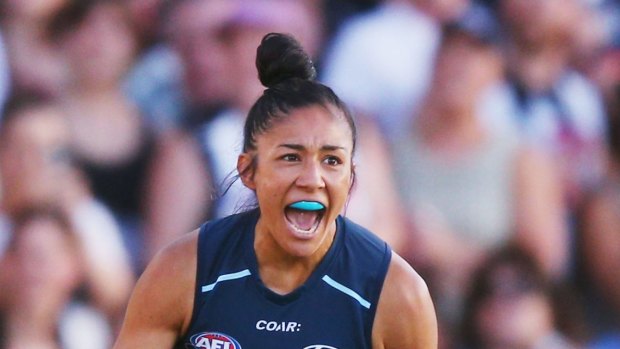
Darcy Vescio has added her voice to the chorus of those calling for a longer AFLW season.Credit: Michael Dodge
Now, thanks to the support of her club, the AFL and key sponsors like Special K and Nike, Vescio can keep her eye on the ball rather than on where her next pay cheque might come from.
“I’m incredibly fortunate,” she says, noting that vast numbers of players – she estimates 16 players in the Carlton squad alone – are getting by on a paltry $17,000 a year for eight games. This compares to their male players, who in 2017 got an average of $371,000 for their 23-game season.
“It’s not really enough. We’re still part-time athletes, which means the girls can’t really get by just playing footy,” says Vescio, who has advocated for extending the AFLW season.
As debate still rages about the rate of pay for female athletes, the good news on International Women’s Day is that sponsorship of sportswomen and their sports is picking up. Brands are finally clicking to the fact that sponsorship of women’s sport is one of the fastest ways to reach the most sought-after consumer market – young women of 16 to 24 years of age.
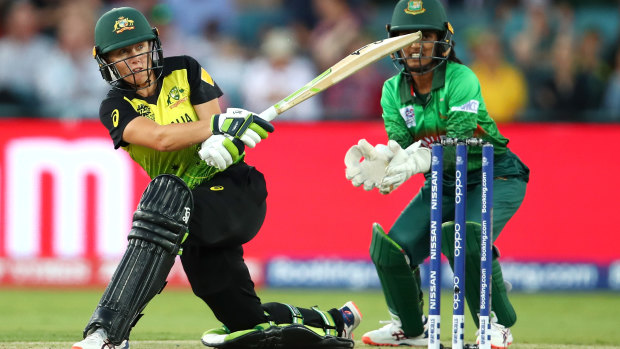
Alyssa Healy takes to the Bangladesh bowling attack.Credit: Getty
Between 2013 and 2017, corporate sponsorship dollars going into women’s sport increased by 47 per cent.
While more recent data is still being compiled, the roaring success of a range of female sporting codes – most notably women’s cricket and the AFLW – means that increase is expected to be much larger when the numbers are crunched.
On Sunday, more than 60,000 cricket fans are expected to file into the MCG to watch the Commonwealth Bank-sponsored Australian team (sans star all-rounder Ellyse Perry) play India in the final of the ICC Women’s Twenty20 World Cup.
In Sydney, the NRL Women’s competition, strongly backed by major retailer Harvey Norman, is now three years old, having built on the popularity of women’s state of origin.
And in Newcastle on Friday night, Chelsea FC women’s player Sam Kerr and her “Westfield” Matildas teammates again drew thousands of ticket-paying fans, while tennis player Ash Barty is well and truly a household name.
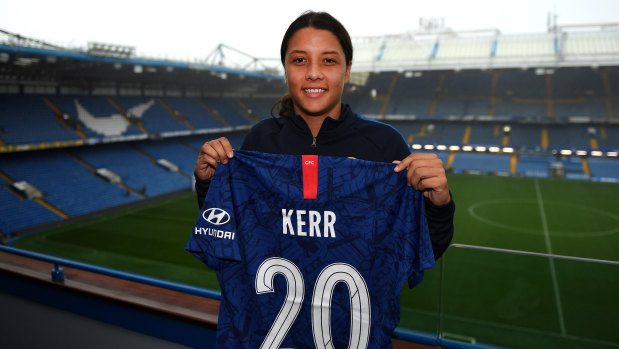
Sam Kerr recently signed a lucrative deal with Chelsea's women's team.
The growing corporate interest in women’s sports, and the broadcasting of their tournaments on major networks and popular streaming services, is reflective of the increasing appetite from consumers.
A 2018 survey by Nielsen across eight national markets, including Australia, found that 84 per cent of sports fans are interested in women’s sports.
The Nielsen report did note that women still received less attention than their male counterparts, but there were new commercial opportunities for rights holders, brands and media.
And there are still some significant gaps. It emerged late last year that Kerr’s deal with Nike was believed to be $2 million over five years, despite her being presented as one of the global stars of the game.
Dr Ashlee Morgan, sports business senior lecturer at Edith Cowan University, says women’s sport is at a tipping point and that the next set of deals to support female athletes will come with a much larger price tag as women’s sport becomes more and more professional.
“We’re in that point of time when brands can get the commercial value at a lower entry point,” Morgan says.
“But take AFLW – as it increases its commercial appeal, the competition for sponsorship is going to keep rising, and as the gap between male and female sport in terms of pay and sponsorship closes, the products become more similar.”
But part of the allure of women’s sport is its “grassroots” feel, the sense that the women playing are normal. Part of what is inspiring about these players for consumers and brands is their “real life” stories of struggle – or, in other words, the low rates of pay and their part-time status.
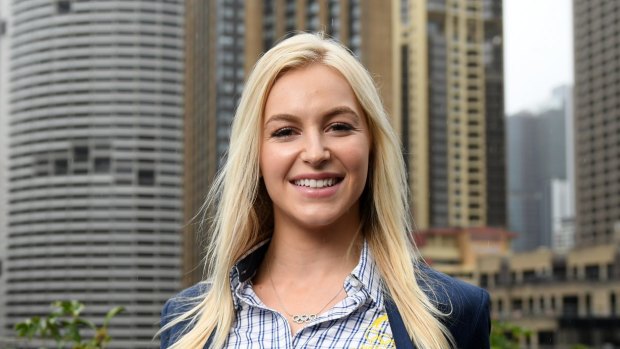
Australian aerial skier Danielle Scott at the launch of the Australian Winter Olympics uniform.Credit: AAP
It raises an interesting question: Will more interest and more professionalisation alienate women’s sport from the brands that support it?
“Any industry that increases in commercialisation at this rapid speed, that’s going to be an outcome,” Morgan says.
Two-time Olympian Danielle Scott is riding the positivity. The aerial skier has collected an impressive group of sponsors with the help of her management team at Lampoon: Under Armour, GoPro, VW Australia, Tradie and Oakley.
“It’s an amazing time to be a female in sport right now and that’s because we’ve created our own personalities and our own profiles within sport,” she says. “It’s not about men being that strong athlete, that recognisable person, and now it’s more about how women can support brands.”
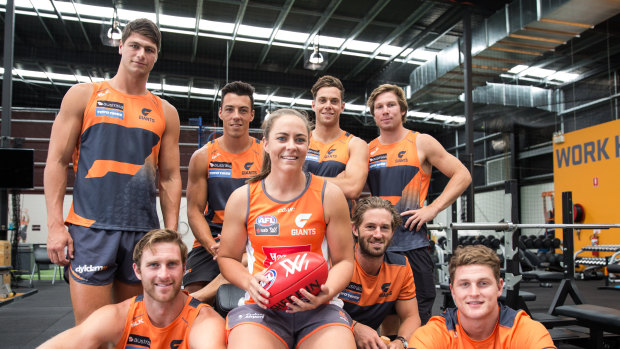
Alex Saundry, centre, back in her playing days when she was also working for Paul Connors' Connors Sports Management.
Alex Saundry, a former Greater Western Sydney player turned player manager, says sponsorship opportunities for AFLW players have grown significantly.
“It’s grown from people being a bit tokenistic and have people come along for the day for no fee and be a part of a corporate gig or at community grassroots level,” says Saundry.
“It’s gone from people thinking they need to include the girls from an equality point of view to it actually being really sought after and something that corporates have found impacts really well and it resonates really well with employees.”
Commonwealth Bank head of human resources Sian Lewis knows the bank’s support of cricket, particularly professional and grassroots women’s cricket, is popular with staff and customers.
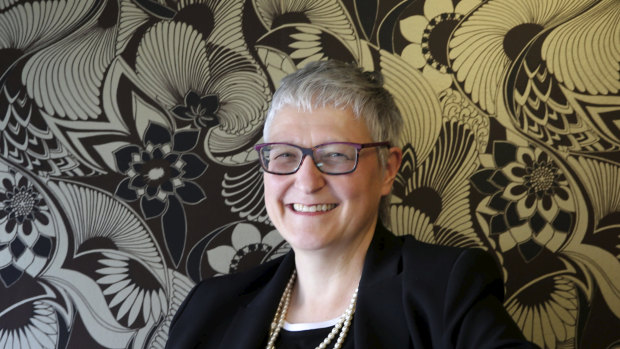
Commonwealth Bank group executive human resources Sian Lewis had to get to university before she could take up cricket and rugby. She has long hung up her bat and boots but is still a fierce advocate for women's sports. Credit: Nine
Since 2017, the bank has pumped in tens of millions into women’s cricket at the national level, thanks to shifting public sentiment after the notorious Sandpaper-gate incident.
But Lewis is not sure women’s sport has reached the tipping point that Morgan sees. She seems a little surprised at the suggestion that too much money could undermine its “real life” vibe.
“I’d love to get to a position where I think there had been enough money poured into women’s sport so that we could think they were too professional and earning too much to be in touch with the grassroots,” she says.
Lewis says growing the grassroots game will increase the future pool of potential professional players and lift the already high quality of the women’s game.
CBA’s grassroots program has provided funding to 750 clubs, associations and school through its Growing Cricket for Girls Fund and around 73 new girls’ competitions. As a result, school participation in cricket by girls has grown 288 per cent in just a few years, says Lewis.
“As you grow grassroots, you get more athletic women wanting to play sport, to stay playing sport post school you will identify the Ellyse Perrys of the future.”
Cricket Australia also sees the value in the women’s game, but CA executive general manager broadcasting and commercial Stephanie Beltrame echoes Lewis in saying there’s still a long way to go.
“I don’t think we’ve even touched the surface for women’s sport,” Beltrame says.
“But a lot of our sponsors now actually want to invest in cricket. They don’t say men’s and women’s, they’re saying we want to be involved with cricket.”
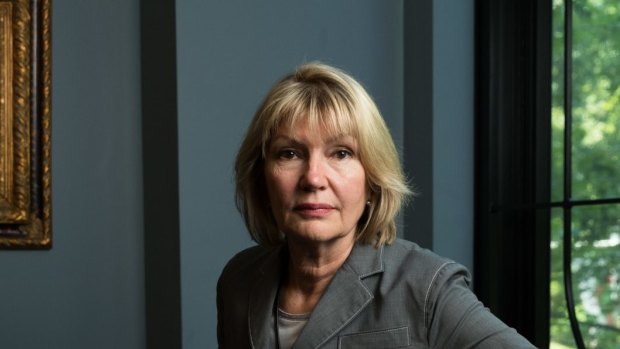
Harvey Norman CEO and sports nut Katie Page has been on a crusade to increase levels of participation and interest in traditionally male-dominated sports such as league, horse racing and Formula One. Credit: Janie Barrett
Beltrame adds that there is a clear audience for women’s sports – the WBBL is the fourth most-watched team sport competition on television – but it could be as much as 10 years before rights for women’s competitions are sold separately to media networks.
Former NRL director and the founder of Women in League round (in 2007) Katie Page has waited for two decades for interest in women’s sport to pick up.
Page, the chief executive of major corporate women’s sport sponsor Harvey Norman, has long been out on her own spruiking the merits of investment. Harvey Norman sponsors a range of women athletes and teams, notably the NRL Women’s league and GWS’ AFLW team.
“You couldn’t get a commercial outcome in the early years. We were the only ones there in the early days,” she says.
Page laughs loudly when asked if the growing interest in women’s sport by sponsors could mean Harvey Norman might face competition for sponsorship deals in future.
“Wouldn’t that be fabulous? I would be so happy with that outcome.”
Page says Harvey Norman’s sponsorship produces strong commercial and shareholder value. “These are our customers,” she says.
Edith Cowan’s Morgan says some brands are finally recognising the reach of women’s sport in a world where, in many households, women still make 70 to 80 per cent of purchasing decisions.
“Women are still making those decisions and women’s sport is reaching this audience; to me it’s a no brainer.”